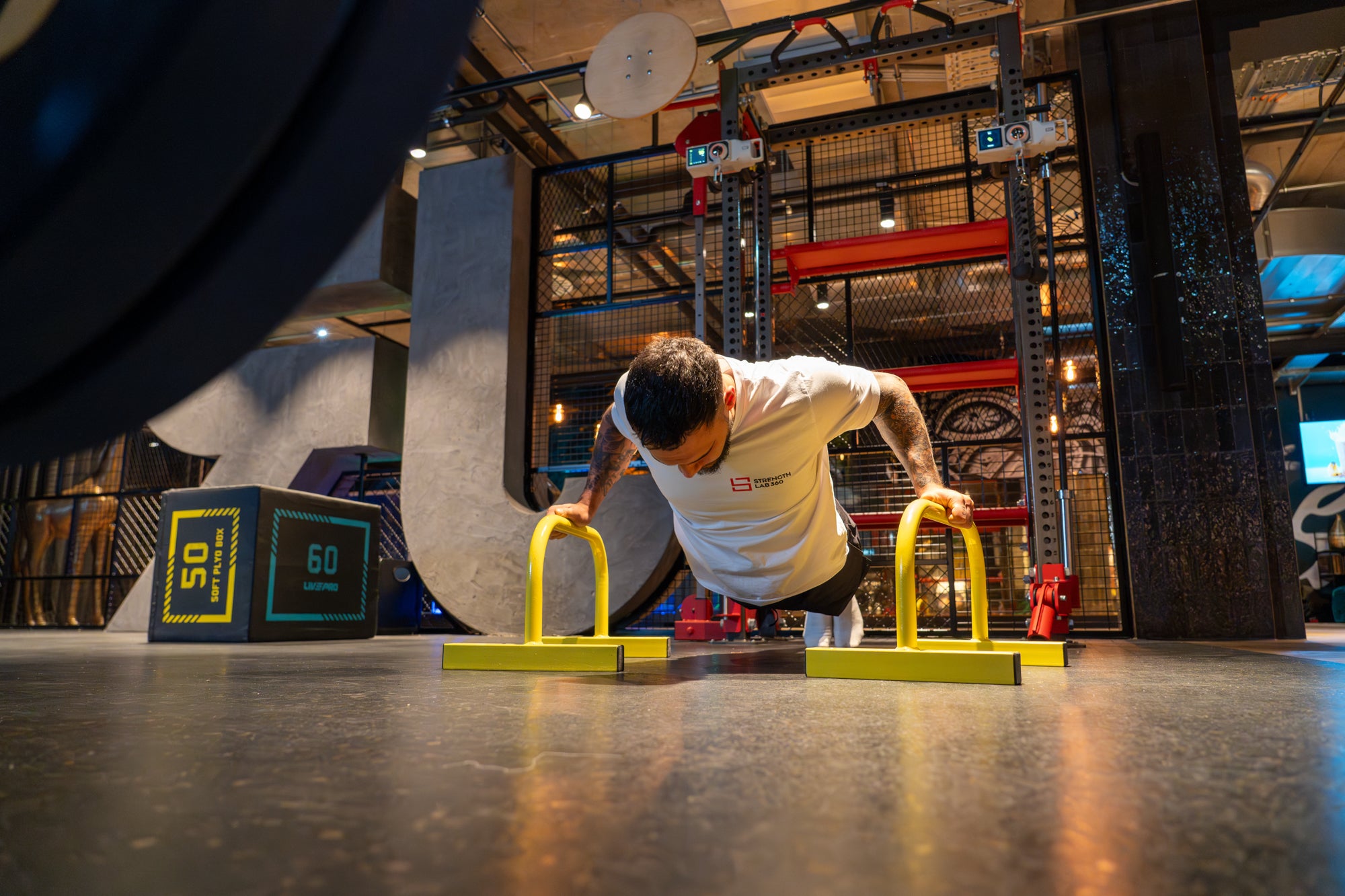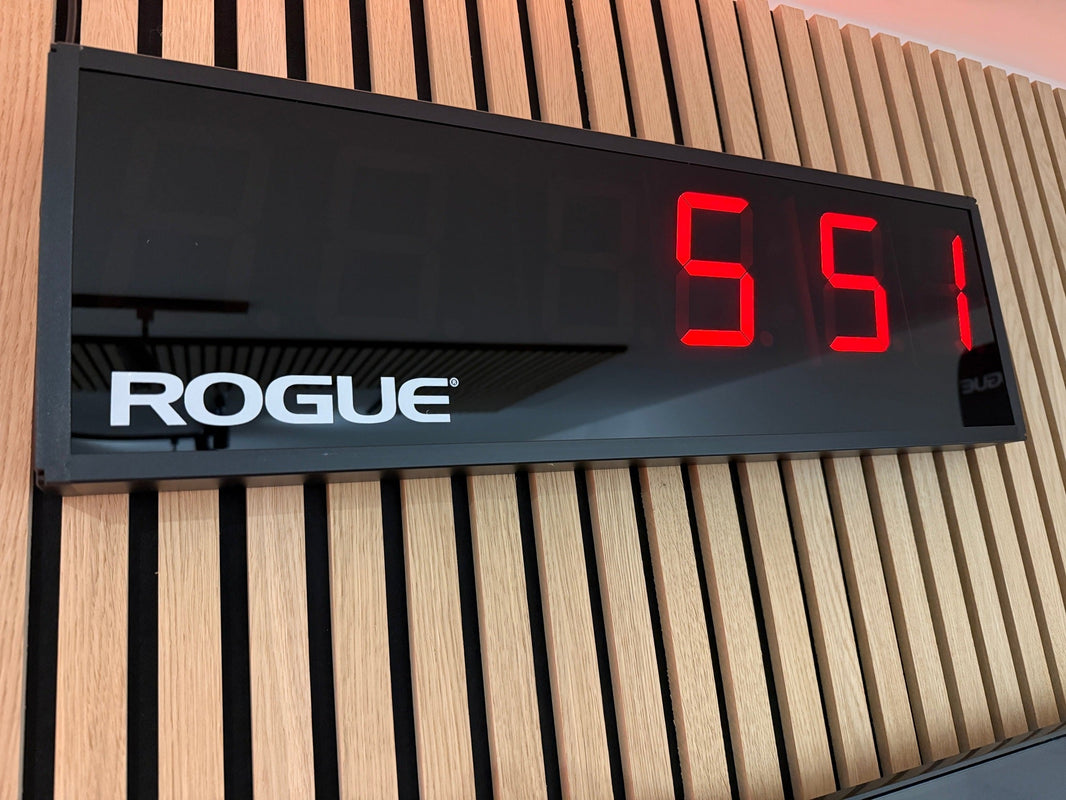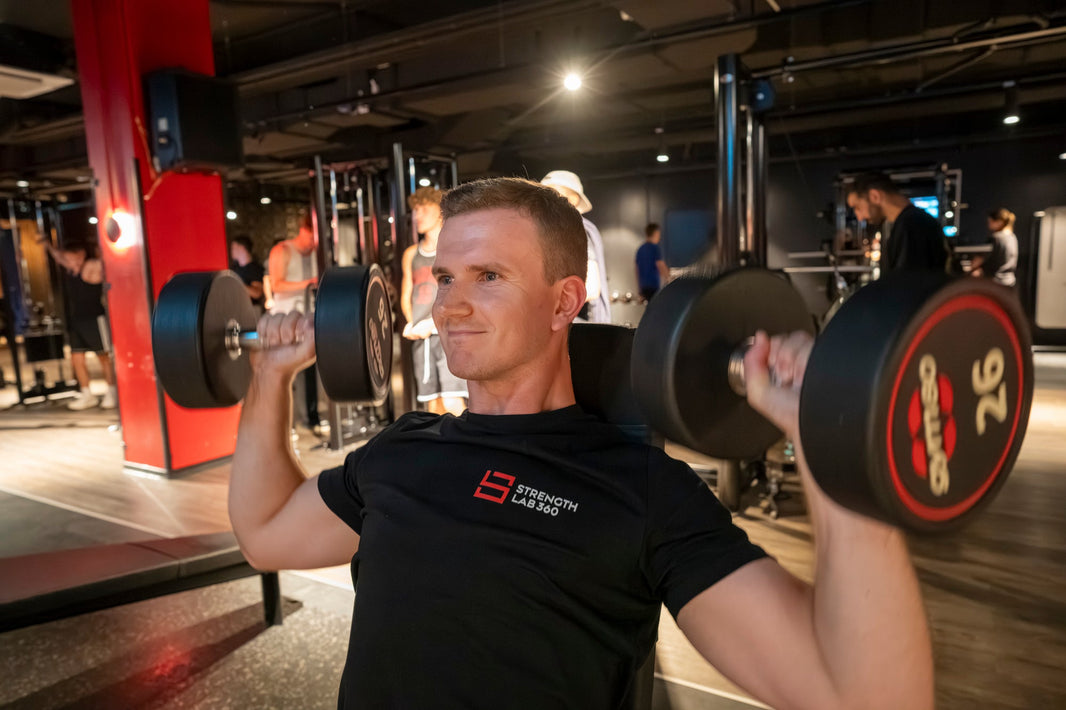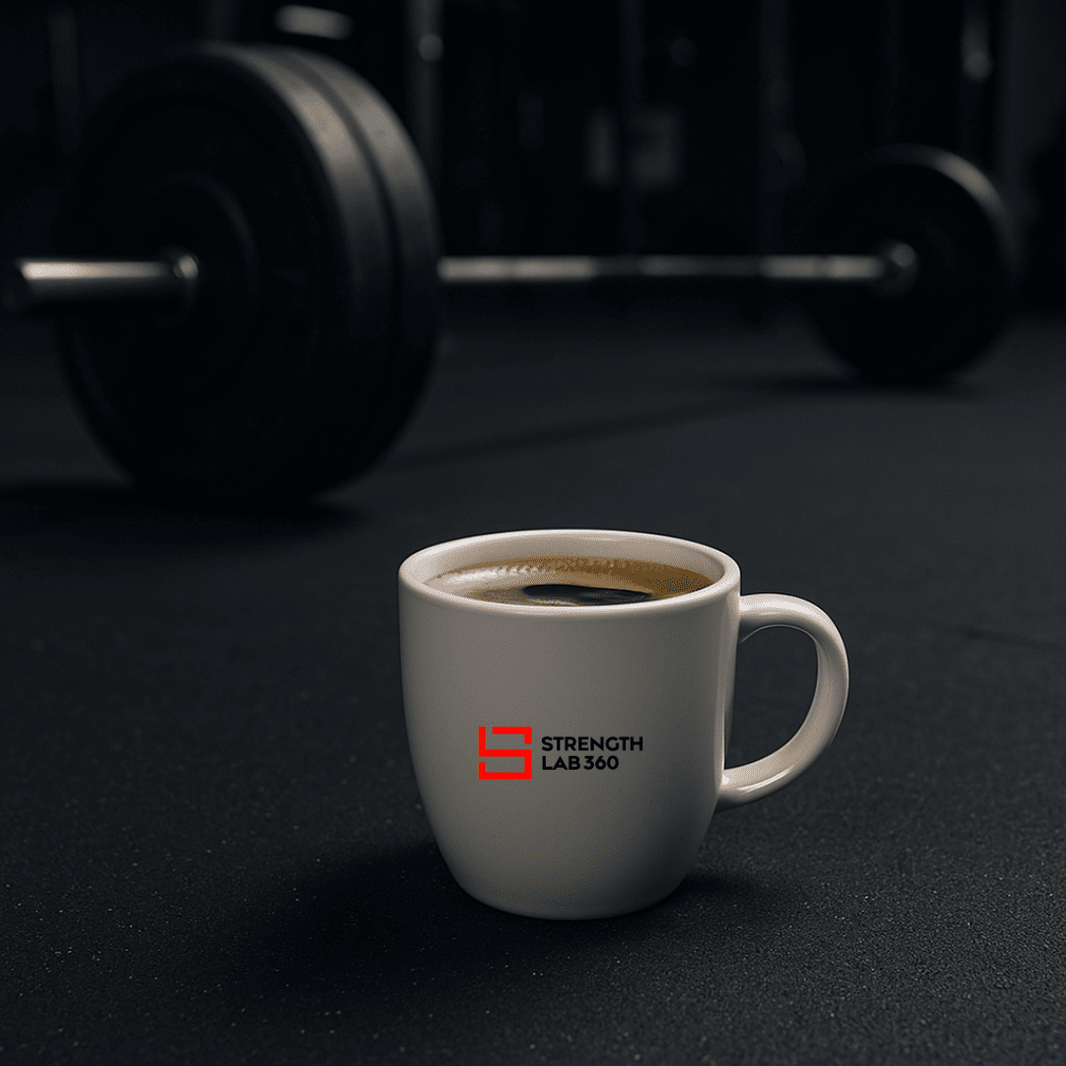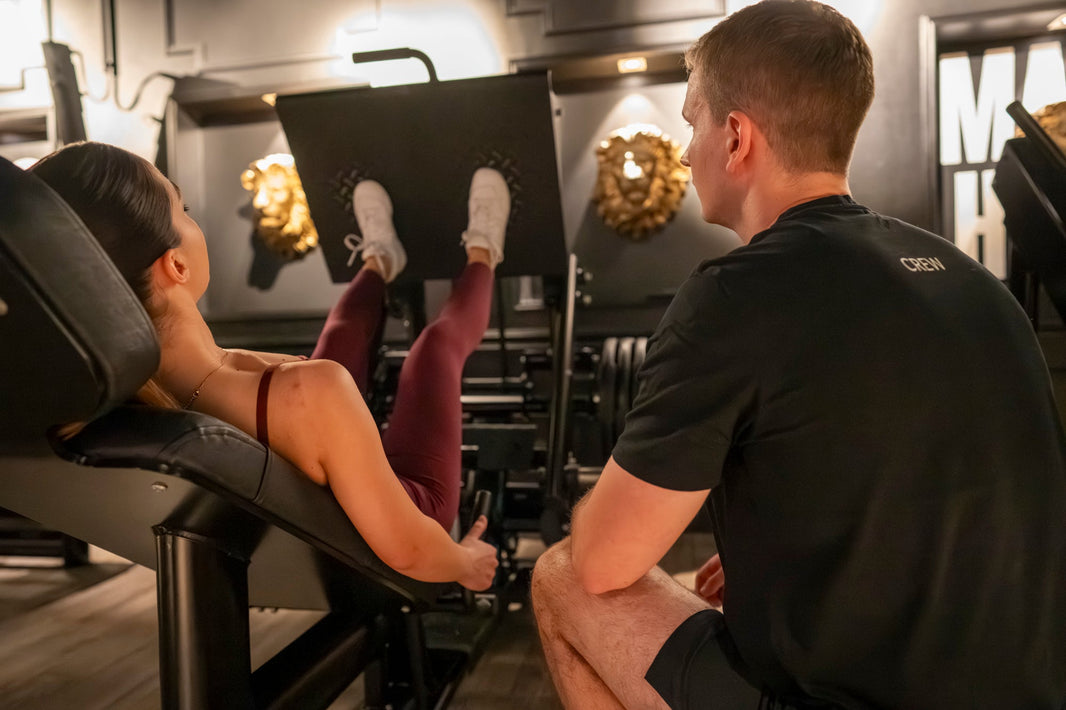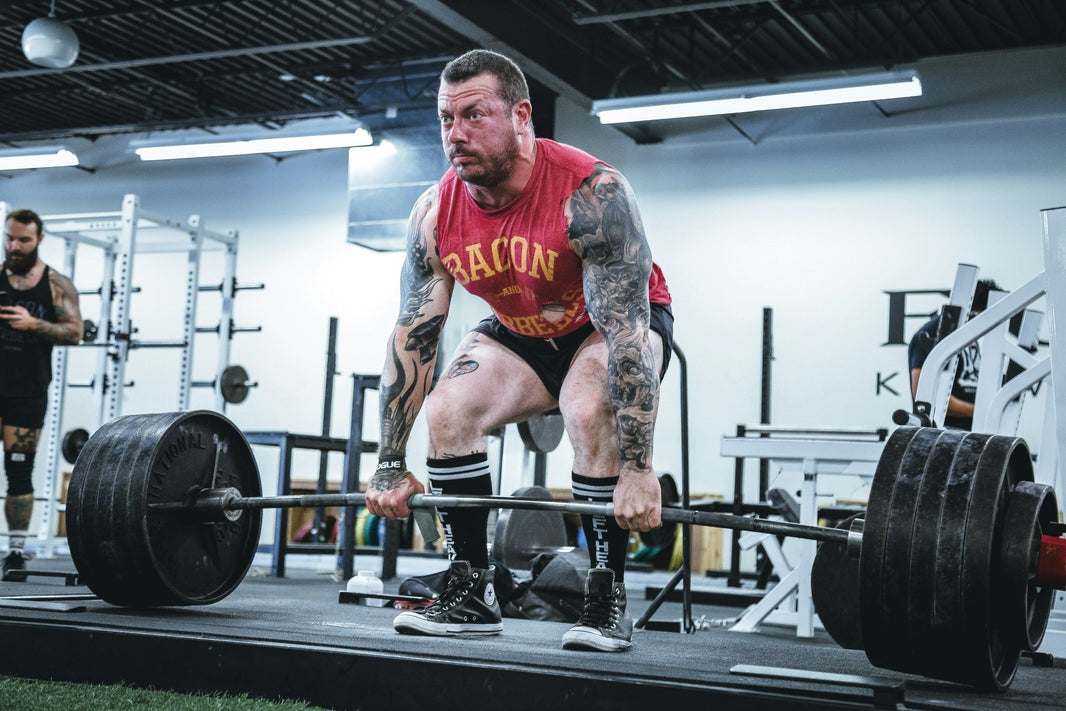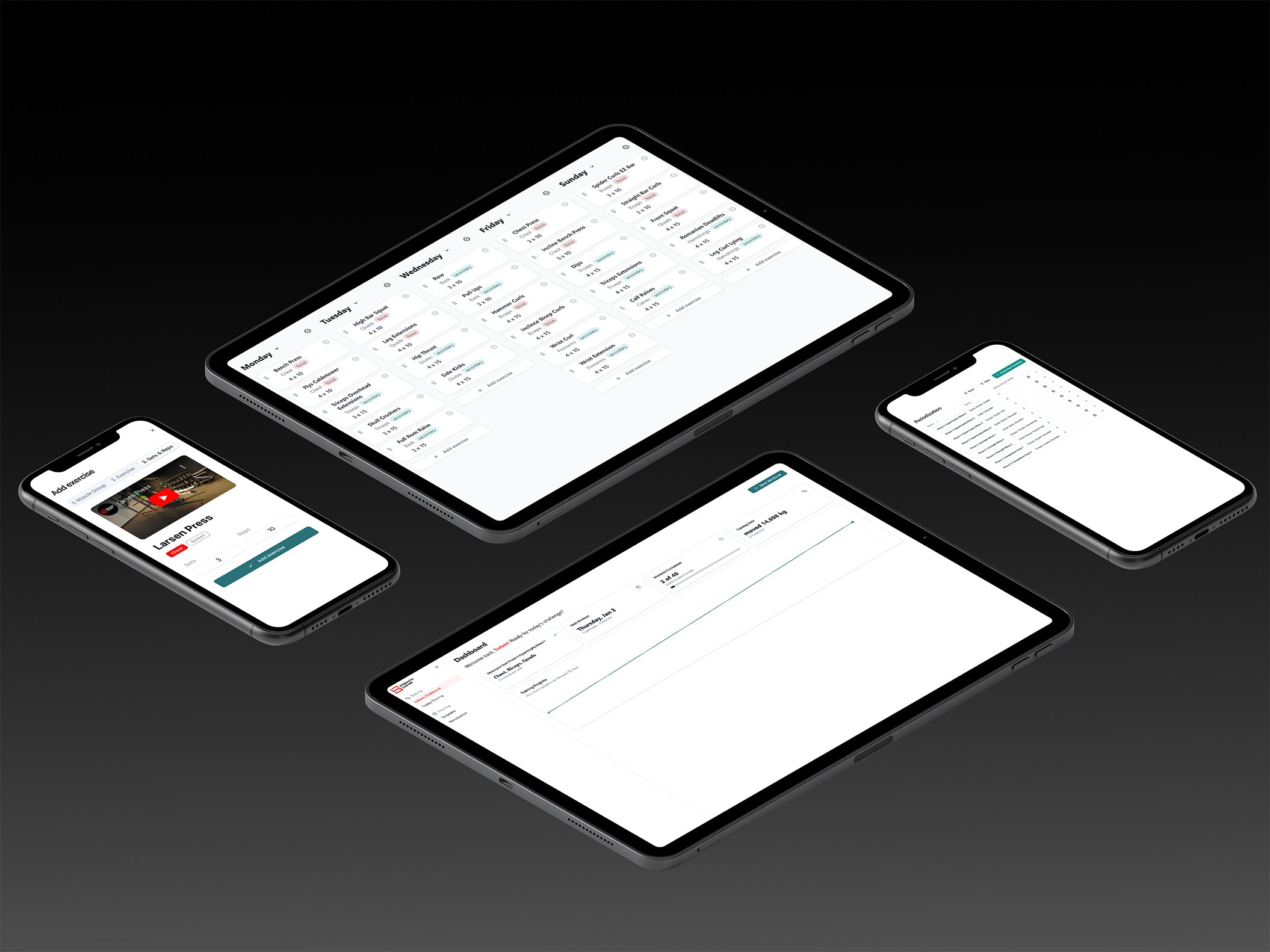In the realm of strength training, the quest for the best powerlifting app is paramount. Visit StrengthLab360, a leader in this digital domain, offers a solution that evolves with the athlete’s journey. This article delves into the essential features that set apart the best powerlifting apps of 2025, focusing on automatic adjustments based on real-time data and the seamless integration with Android devices. Readers will uncover how these apps not only enhance their training efficiency but also align with their fitness aspirations. By addressing the common hurdle of stagnant progress, the content promises to guide strength athletes toward a more informed and effective training regimen.
Looking for an overview of the Best Apps for Strength Training? Start Here!
If you`re short on time, here are our top pics:
- Best overall: StrengthLab360 App
- Solid Choice with unpersonalized AI: JuggernautAI
- Basic Tracker with limited Features: Alpha Progression
- AI App with questionable Features: Dr. Muscle App
Explore our ultimate guide to the best strength training apps of 2025 to discover the top tools for powerlifters, bodybuilders, and fitness enthusiasts. Compare features, benefits, and find the app that’s right for you
Understanding the Evolution of Powerlifting Apps in 2025
The landscape of strength training has undergone a remarkable transformation, with technology playing a pivotal role. The best powerlifting app of 2025 encapsulates this evolution, integrating advancements in features that have redefined the way athletes approach dumbbell workouts, endurance enhancement, and overall health. This section delves into the sophisticated interplay between artificial intelligence and training programs, offering a glimpse into how weight management and strength development have been revolutionized. Each subsequent topic will dissect the core components that have shaped the current state of powerlifting applications, underscoring their significance for today’s strength athletes. Visit StrengthLab360.
How Technology Transformed Strength Training
The integration of sophisticated software into strength training has revolutionized the discipline, particularly in the realm of powerlifting. Athletes now have access to applications that not only track their squat, bench, and deadlift metrics but also provide tailored exercise programs that adapt to their evolving strength levels and weight loss goals. This technological leap has enabled a more scientific approach to training, where data-driven insights lead to optimized performance and reduced injury risk, marking a significant shift from traditional, one-size-fits-all workout plans.
Advancements in App Features Over the Years
Over the years, powerlifting apps have seen a surge in innovative features, with methodologies once reserved for elite athletes now accessible to the wider fitness community. These platforms have evolved beyond mere tracking tools, incorporating elements of sport science that cater to disciplines ranging from bodybuilding to Olympic weightlifting. The influence of fitness icons like Kayla Itsines has even extended into app design, inspiring a generation of strength enthusiasts to pursue their goals with unprecedented precision and support.
The Influence of Artificial Intelligence on Training Programs: Concerns and Risks
Artificial intelligence has revolutionized the design of powerlifting and strength training programs, introducing unprecedented levels of personalization and data-driven insights. However, this technological advancement is not without its concerns and risks.
AI systems analyze performance data to refine training regimens, but the reliance on algorithms raises questions about their ability to fully understand individual nuances.
For example, AI may over-prioritize certain metrics, such as volume or intensity, while underestimating critical factors like mental fatigue, injury history, or biomechanical variations unique to each athlete. This could lead to programs that, while technically optimized, may inadvertently push athletes toward overtraining or injury.
Additionally, the integration of AI into strength training creates a dependency on data accuracy and system design. Inadequate or biased data inputs can result in flawed recommendations, particularly for unconventional disciplines such as CrossFit endurance or kettlebell training, where performance metrics are less standardized. Even in traditional approaches, like yoga for flexibility and recovery, AI may struggle to incorporate subjective benefits, such as stress relief or improved proprioception, which are harder to quantify.
Lastly, the human and scienced based element—the role of coaches in understanding an athlete’s personal goals, emotional state, and adaptive needs—may be diminished. While AI provides insights, it cannot replace the intuition, empathy, and real-world experience that coaches bring to the table. The risk lies in over-reliance on AI, potentially sidelining these irreplaceable human factors in training.
In summary, while AI-driven systems offer efficiency and innovation in strength training, they must be implemented with caution. Balancing the benefits of technology with a holistic, human-centered approach like the StrengthLab360 App does, is essential to mitigate these risks and ensure the well-being and progress of athletes.
Essential Features of the Best Powerlifting App
In the dynamic world of strength training, the best powerlifting apps of 2025 stand out by offering personalized workout plans, including resistance band exercises and pilates, tailored to individual needs. These apps employ sophisticated algorithms akin to a personal trainer, ensuring progressive overload principles are meticulously applied. Real-time performance tracking and analytics provide a granular view of an athlete’s journey, while community engagement and competitive challenges foster a spirited environment. Additionally, seamless integration with wearables and gym equipment captures every nuance of a workout, propelling users towards their fitness zenith.
Personalized Workout Plans Tailored to You
In the realm of weightlifting, the best powerlifting apps of 2025 distinguish themselves by offering personalized workout plans that adapt to the unique strength curves and performance metrics of each athlete. With the ability to download from Google Play, these apps provide real-time feedback on deadlift form, monitor the heat of workouts, and adjust routines to ensure continuous improvement. This level of customization ensures that strength athletes receive tailored guidance that aligns with their specific goals, fostering an environment where every rep, set, and lift is a step towards peak performance.
Real-Time Performance Tracking and Analytics
In the competitive sphere of strength training, the best powerlifting app of 2025 stands out with its advanced real-time performance tracking and analytics. The user interface is meticulously designed to provide athletes with immediate insights into their shoulder and muscle development, allowing for swift adjustments to training regimens. Compatibility with devices like Garmin and availability on the App Store ensures that users have unfettered access to their fitness data, empowering them to make informed decisions about their training and recovery.
Community Engagement and Competitive Challenges
In the sphere of powerlifting, community engagement and competitive challenges are integral to the best apps of 2025, fostering a sense of camaraderie and motivation among users. These platforms facilitate a shared journey in strength development, where tracking nutrition, mastering the bench press, and refining barbell techniques become collective endeavors. By keeping track of personal achievements and comparing them with peers, athletes are inspired to surpass their limits, leveraging the supportive network to fuel their progress and celebrate their victories.
Top Powerlifting Apps of 2025 for Strength Athletes
In the pursuit of peak performance, strength athletes have access to a variety of powerlifting apps in 2025, each offering distinct features to enhance training outcomes. Below is an overview of two prominent apps, followed by an examination of how StrengthLab360 provides superior value through its science-backed algorithms and optional real coach integration.
JuggernautAI – In-Depth Review and Benefits
JuggernautAI has established itself as a leading powerlifting app, delivering personalized training programs that adapt to individual user data. Developed by renowned coach Chad Wesley Smith, the app utilizes AI-driven algorithms to tailor workouts based on factors such as training history, current fitness levels, and specific goals. This customization ensures that each session aligns with the athlete’s progression, promoting efficient strength development.
Strengths:
- Personalized Programming: JuggernautAI creates individualized plans that adjust in real-time, accommodating the user’s readiness and performance metrics. Garage Gym Reviews
- Comprehensive Exercise Library: The app offers a wide range of exercises with detailed instructions, aiding users in executing movements correctly. Garage Gym Reviews
Limitations:
- Lack of Human Coaching Interaction: While the AI provides tailored programs, there is no option for direct communication with a human coach, which may be a drawback for users seeking personalized guidance. Garage Gym Reviews
- User Interface Complexity: Some users find the dashboard initially overwhelming, indicating a learning curve in navigating the app’s features.
Alpha Progression – Strengths and Limitations
Alpha Progression is another notable powerlifting app that offers intelligent strength training programs. It provides AI-generated custom training plans based on the latest exercise science research, allowing users to create personalized workout routines. The app includes a comprehensive exercise database with instructional videos and supports features like periodization and deloading to optimize training cycles.
Strengths:
- AI Training Plans: Alpha Progression utilizes AI to generate training plans grounded in current exercise science, ensuring effective and safe workouts.
- Extensive Exercise Database: With over 550 exercises accompanied by instructional videos, users have access to a wide variety of movements to enhance their routines.
Limitations:
- Limited Real-Time Adjustments: While the app offers personalized plans, it may not adjust workouts in real-time based on immediate performance feedback, potentially affecting responsiveness to an athlete’s day-to-day condition.
- Absence of Human Coaching: Similar to JuggernautAI, Alpha Progression does not provide options for direct interaction with human coaches, which might be a limitation for those seeking personalized guidance.
StrengthLab360 – Unique Offerings and User Experience
StrengthLab360 distinguishes itself in the powerlifting app market by integrating science-backed algorithms with the option for real coach interaction, offering a holistic approach to strength training.
Unique Offerings:
- Science-Backed Progressive Overload Algorithm: The app employs advanced algorithms to adjust training variables in real-time, ensuring optimal progression and effective workouts.
- Optional Real Coach Integration: Users have the opportunity to work directly with certified coaches, receiving personalized feedback and tailored programming that aligns with their specific goals.
- Comprehensive Progress Tracking: StrengthLab360 provides detailed analytics, allowing athletes to monitor their development and make informed adjustments to their training plans.
User Experience:
The app features an intuitive interface designed for ease of use, enabling athletes to focus on their training without technical distractions. The seamless integration of AI-driven programming and human coaching offers a balanced approach, catering to both novice and experienced lifters.
Conclusion
While apps like JuggernautAI and Alpha Progression offer valuable personalized training programs, StrengthLab360 provides enhanced value through its combination of science-backed algorithms and the option for real coach interaction. This dual approach ensures that athletes receive both the precision of AI-driven adjustments and the personalized guidance of experienced coaches, facilitating optimal performance and strength gains.
Choosing the Right Powerlifting App for Your Goals
Selecting the optimal powerlifting app necessitates a strategic approach tailored to individual aspirations and training preferences. StrengthLab360 guides athletes through this process, beginning with the identification of personal strength objectives. Subsequent evaluation of app features ensures alignment with specific needs, while consideration of subscription costs and value offers a balanced perspective. Reading user reviews and testimonials provides real-world insights, rounding out the decision-making process for discerning strength athletes seeking the best powerlifting app in 2025.
Identifying Personal Strength Objectives
For strength athletes embarking on the selection of a powerlifting app, the initial step is a clear articulation of their strength objectives. Whether the aim is to enhance muscle hypertrophy, increase one-rep maxes, or refine technique for competitive lifts, identifying these goals is crucial. This clarity directs the athlete to an app like StrengthLab360, which offers personalized, science-based training plans and real-time adjustments, ensuring that the chosen platform aligns with their specific aspirations and propels them towards their desired outcomes.
Evaluating App Features That Match Your Needs
When selecting a powerlifting app, strength athletes must scrutinize the features to ensure they align with their training needs. An app that offers real-time algorithmic adjustments and a comprehensive analytics dashboard, like StrengthLab360, can be pivotal for those focused on hypertrophy and strength gains. It’s essential for users to consider how the app’s capabilities, such as coach-athlete connectivity and customizable mesocycles, will support their specific fitness journey, ultimately enhancing their training efficacy and athletic performance.
Considering Subscription Costs and Value
When determining the best powerlifting app for 2025, strength athletes should weigh subscription costs against the value each app delivers. StrengthLab360 stands out by justifying its premium price through an array of advanced features, including real-time algorithmic adjustments and a detailed analytics dashboard, both of which are designed to elevate training outcomes. For the discerning athlete, the investment goes beyond the upfront cost—it’s about choosing an app that provides personalized, science-based training plans tailored to individual fitness goals, offering a cost-effective and results-driven solution to strength training needs.
Reading User Reviews and Testimonials
Perusing user reviews and testimonials is a critical step for strength athletes seeking the best powerlifting app in 2025. These firsthand accounts offer invaluable insights into the app’s performance, usability, and the tangible results achieved by peers. By examining the experiences of other users, athletes can gauge the app’s efficacy in real-world scenarios, ensuring their selection is informed by outcomes rather than mere feature lists.
Maximizing Your Training With Powerlifting Apps
For strength athletes seeking to elevate their training, the best powerlifting app in 2025 offers a robust framework for success. Setting achievable targets and milestones lays the foundation for progress, while leveraging app tools for optimal performance ensures that every workout is maximally effective. Syncing nutrition and recovery with training regimens is crucial for sustained growth, and tracking progress alongside adjusting plans accordingly provides a dynamic path to surpassing personal bests. These strategies, when combined, create a comprehensive approach to powerlifting that is both methodical and adaptable.
Setting Achievable Targets and Milestones
For strength athletes, the establishment of achievable targets and milestones is a fundamental aspect of training that the best powerlifting apps of 2025 facilitate with precision. These applications empower users to set realistic strength goals, track incremental progress, and adjust their training plans in response to their evolving capabilities. By providing a clear roadmap for progression, the app ensures that each athlete can confidently advance towards their peak performance, with every session contributing to their overarching objectives.
Leveraging App Tools for Optimal Performance
To maximize training efficacy, strength athletes are leveraging the sophisticated tools provided by the leading powerlifting apps of 2025. These platforms offer real-time feedback and algorithmic adjustments, enabling users to fine-tune their workouts for optimal performance. By harnessing these advanced features, athletes can ensure that each training session is conducted with the utmost efficiency, leading to consistent strength gains and improved competitive readiness.
Tracking Progress and Adjusting Plans Accordingly
For strength athletes, the ability to track progress and adjust training plans is crucial for continuous improvement. The best powerlifting app in 2025 offers robust features that allow users to meticulously monitor their strength gains and modify their routines based on comprehensive performance data. This adaptability ensures that each athlete’s regimen remains challenging yet achievable, fostering an environment where personal records are consistently surpassed and training plateaus become a relic of the past.
The Future of Powerlifting Apps: What to Expect
As the powerlifting community looks to the horizon, the future of strength training apps promises to be a nexus of innovation and user engagement. Virtual reality enhancements are set to redefine the sensory experience of training, while predictive analytics will offer a new frontier in injury prevention. Social interaction and competitions will become more integrated, fostering a vibrant community of lifters. Expect ongoing updates and technological advancements to continually refine and elevate the user experience for strength athletes.
Virtual Reality Enhancements in Strength Training
The integration of virtual reality (VR) into strength training apps is poised to revolutionize the powerlifting experience by 2025. This immersive technology will allow athletes to simulate competition environments, enhancing mental preparedness and focus. StrengthLab360 anticipates that VR will not only augment the sensory experience of training but also provide a platform for technique refinement, offering a three-dimensional perspective on form and execution that is unparalleled in traditional training settings.
Injury Prevention Through Predictive Analytics
In the realm of strength training, predictive analytics has emerged as a game-changer for injury prevention, a feature that the best powerlifting apps of 2025 have harnessed with remarkable efficacy. By analyzing an athlete’s training data, these apps can forecast potential injury risks and suggest modifications to prevent strain or overuse. This proactive approach empowers strength athletes to train smarter, ensuring longevity in their pursuit of powerlifting excellence while minimizing downtime due to injuries.
Increased Social Interaction and Competitions
The evolution of powerlifting apps in 2025 is set to enhance social interaction and competitive elements, creating a more connected and motivated community of strength athletes. These platforms will facilitate real-time competitions and leaderboards, encouraging lifters to engage in friendly rivalry and support each other’s progress. This increased interactivity not only fosters a dynamic training environment but also provides athletes with additional incentives to push their limits and achieve new personal bests.
Ongoing Updates and Innovations in App Technology
The relentless pace of technological innovation ensures that the best powerlifting apps of 2025 will continue to evolve, offering strength athletes ever more sophisticated tools to enhance their training. Developers are expected to roll out updates that refine user interfaces for even more intuitive navigation and introduce advanced analytics for deeper insights into performance metrics. These enhancements will not only streamline the training process but also empower athletes with actionable data to fine-tune their regimens for optimal results.
Conclusion
In 2025, the best powerlifting app redefines strength training by delivering personalized, data-driven workout plans and real-time performance analytics tailored to the needs of serious strength athletes. Among the competition, StrengthLab360 stands out as the ultimate solution, combining science-backed progressive overload algorithms with optional real coach integration for a truly comprehensive approach.
Unlike apps that focus solely on features like virtual reality or basic analytics, StrengthLab360 emphasizes training precision, injury prevention, and measurable results. Its real-time adjustments and advanced tracking ensure every workout is optimized for maximum efficiency and effectiveness, while its community engagement tools keep athletes motivated and supported.
For strength athletes committed to reaching their peak potential, StrengthLab360 isn’t just an app—it’s an indispensable tool that transforms training into a science-backed journey toward unparalleled performance.
References
- Zourdos, M. C., et al. (2016). “An individualized approach to volume load progressions in periodized resistance training.” Journal of Strength and Conditioning Research, 30(11), 3024-3033.
- Swinton, P. A., Lloyd, R., Keogh, J. W., Agouris, I., & Stewart, A. D. (2012). “A biomechanical analysis of straight and hexagonal barbell deadlifts using submaximal loads.” Journal of Strength and Conditioning Research, 26(5), 1165-1175.
- Helms, E. R., Storey, A., Cross, M. R., & Cronin, J. (2017). “RPE and velocity relationships for the back squat, bench press, and deadlift in powerlifters.” Journal of Strength and Conditioning Research, 31(10), 292-300.
- Grgic, J., & Schoenfeld, B. J. (2018). “Are the Hypertrophic Adaptations to High and Low-Load Resistance Training Muscle Fiber Type Specific?” Frontiers in Physiology, 9, 402.
- Keogh, J. W., & Winwood, P. W. (2017). “The epidemiology of injuries across the weight-training sports.” Sports Medicine, 47(3), 479-501.
